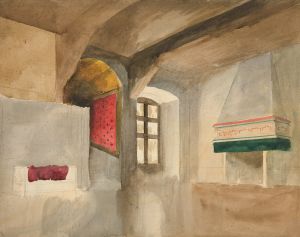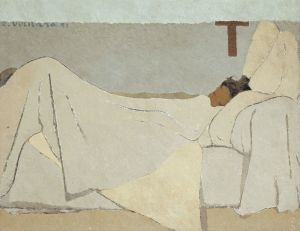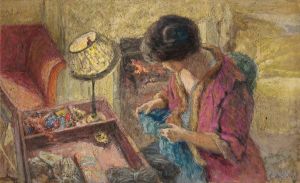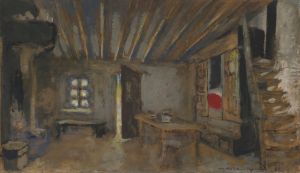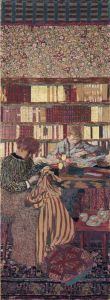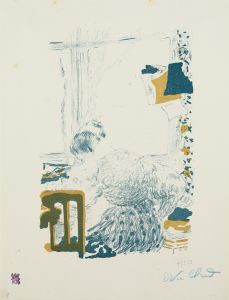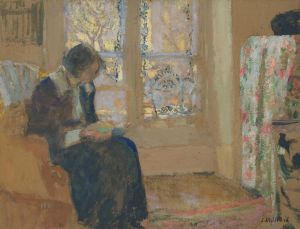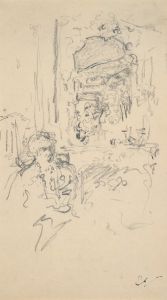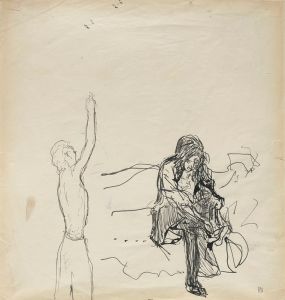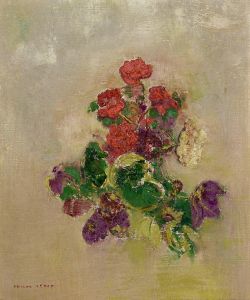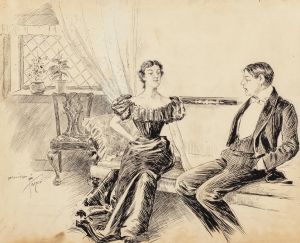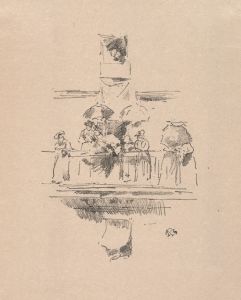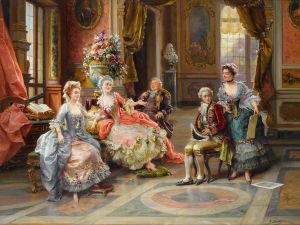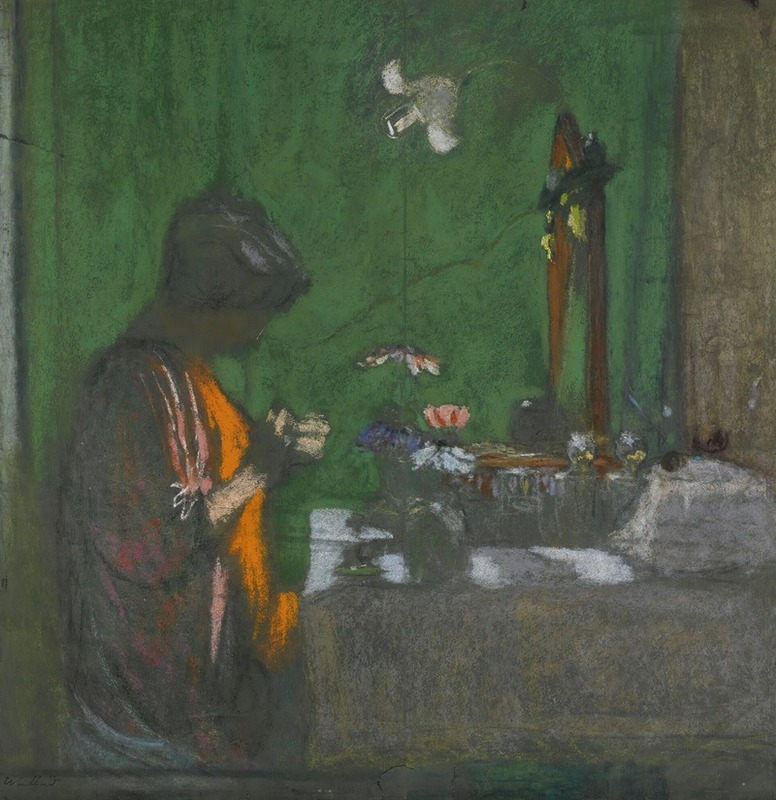
Madame Hessel À Son Cabinet De Toilette
A hand-painted replica of Édouard Vuillard’s masterpiece Madame Hessel À Son Cabinet De Toilette, meticulously crafted by professional artists to capture the true essence of the original. Each piece is created with museum-quality canvas and rare mineral pigments, carefully painted by experienced artists with delicate brushstrokes and rich, layered colors to perfectly recreate the texture of the original artwork. Unlike machine-printed reproductions, this hand-painted version brings the painting to life, infused with the artist’s emotions and skill in every stroke. Whether for personal collection or home decoration, it instantly elevates the artistic atmosphere of any space.
"Madame Hessel À Son Cabinet De Toilette" is a painting by the French artist Édouard Vuillard, created around 1905. Vuillard was a prominent member of the Nabis, a group of avant-garde post-Impressionist artists who were active in France during the late 19th and early 20th centuries. The Nabis were known for their emphasis on color, pattern, and the decorative aspects of painting, often drawing inspiration from Japanese prints and Symbolist literature.
The subject of the painting, Madame Hessel, was Misia Natanson, later known as Misia Sert, a notable figure in Parisian artistic and literary circles. She was the wife of Thadée Natanson, the editor of the influential art magazine "La Revue Blanche," and later married the Spanish painter José-Maria Sert. Misia was a muse and patron to many artists, including Vuillard, Pierre Bonnard, and Henri de Toulouse-Lautrec.
In "Madame Hessel À Son Cabinet De Toilette," Vuillard captures an intimate moment of Misia in her private quarters. The setting is her dressing room, a space that reflects her personal taste and the luxurious lifestyle she led. Vuillard's use of muted colors and soft brushstrokes creates a sense of tranquility and introspection. The composition is carefully arranged, with attention to the interplay of light and shadow, as well as the textures of the various objects in the room.
Vuillard's technique in this painting is characteristic of his mature style, which often involved the use of distemper, a type of paint made from pigments mixed with a water-soluble binder such as glue. This medium allowed him to achieve a matte finish and subtle gradations of color. The artist's focus on domestic interiors and the lives of women was a recurring theme in his work, reflecting his interest in the everyday and the intimate.
The painting is notable for its depiction of the modern woman at the turn of the century, a time when traditional gender roles were being challenged and redefined. Misia, as portrayed by Vuillard, embodies both elegance and independence, qualities that made her a central figure in the cultural milieu of her time.
"Madame Hessel À Son Cabinet De Toilette" is part of a larger body of work in which Vuillard explored the themes of domesticity and the private lives of his subjects. His paintings often convey a sense of quiet observation, inviting the viewer to contemplate the subtleties of human interaction and the spaces people inhabit.
Today, Vuillard's work is celebrated for its contribution to the development of modern art, particularly in its blending of fine art and decorative elements. His paintings are held in major museum collections around the world, including the Musée d'Orsay in Paris, the Metropolitan Museum of Art in New York, and the National Gallery in London.
In summary, "Madame Hessel À Son Cabinet De Toilette" is a significant work by Édouard Vuillard that captures the essence of his artistic vision and the cultural context of early 20th-century Paris. The painting remains an important example of Vuillard's ability to convey the intimate and personal through his distinctive style and technique.





